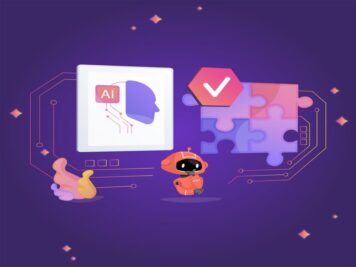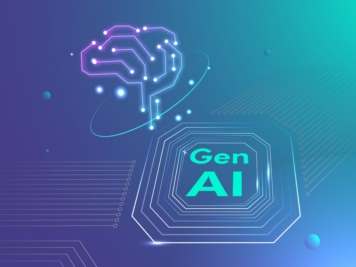As businesses begin to see the benefits of Generative AI, they are simultaneously recognizing the diverse risks associated with this technology. McKinsey’s 2024 AI report highlights a sharp increase in adoption, with 65% of companies now using generative AI – almost double from the previous year. Yet, for all the potential it offers, 44% of these businesses are grappling with significant risks. Chief among these is the protection of Personally Identifiable Information (PII), a growing concern as AI systems handle increasingly sensitive data.
The deeper generative AI integrates into our processes, the more critical it becomes to protect personally identifiable information. Whether developing AI solutions or using them, prioritizing sensitive data protection is crucial to mitigate risks and ensure regulatory compliance.
In this blog, I have covered the significance of PII masking in generative AI, outline implementation strategies, and discuss the risks of poor data handling. You’ll also discover key methods to strengthen data security and improve compliance in your AI practices.
Understanding PII and its risks
PII encompasses any data that can be used to identify a specific individual. This includes not only obvious identifiers such as names, Social Security numbers, and email addresses but also more subtle information like IP addresses, location data, and behavioral patterns. PII in the wrong hands has serious consequences, including identity theft, financial fraud, and other harmful activities.
Generative AI models — such as those used in chatbots, text generators, and image creators—often handle vast amounts of data, some of which may contain PII. If this information is not managed with care, then it could get accidentally exposed or intentionally exploited, leading to severe privacy violations. The potential for such breaches highlights the critical importance of implementing robust safeguards to ensure that PII remains protected throughout the AI processing lifecycle.
The importance of masking PII
Masking Personally Identifiable Information (PII) involves altering sensitive data in a way that renders it unrecognizable yet useful for its intended purpose. This process is crucial, especially in the field of AI, where data is frequently utilized to train models or generate outputs that may be shared with users, integrated into other systems, or even made publicly available.
Implementing effective PII masking techniques is essential for several reasons. First and foremost, it safeguards individuals’ privacy by ensuring that their personal information cannot be easily traced back to them, thereby reducing the risk of identity theft and other forms of misuse. Secondly, it enables organizations to adhere to stringent data protection regulations, such as the General Data Protection Regulation (GDPR) in the European Union, the California Consumer Privacy Act (CCPA), and various other global data protection laws. These regulations impose strict requirements on how personal data must be handled as effective PII masking is crucial in meeting legal obligations.
By prioritizing robust PII masking practices, organizations can protect their users and customers. This approach also helps build trust and ensures compliance in an increasingly data-driven world.
Techniques for masking PII in generative AI
Masking Personally Identifiable Information (PII) in Generative AI is essential to protect privacy and comply with regulations. Here are some common techniques used to achieve this:
Data anonymization
Data anonymization involves removing or obfuscating personally identifiable information to prevent the identification of individuals. Common methods include tokenization, where sensitive data is replaced with tokens, and generalization, where specific details are replaced with broader categories. Suppression, which omits PII entirely, is also used to enhance privacy.
Data masking
Data masking transforms sensitive information into a masked version that retains the format but alters the content to protect PII. Static masking replaces real data with fictitious data for use in non-production environments, while dynamic masking alters data in real-time during access, often in production environments, to prevent exposure.
Redaction
Redaction involves removing or blacking out sensitive information from data to protect PII before it’s used or shared. This can be done manually, through human review, or automatically using natural language processing (NLP) techniques to detect and remove PII. Redaction ensures that sensitive data is not visible or accessible in the final dataset.
Use of AI-specific libraries and tools
Using AI-specific libraries and tools helps detect and mask PII efficiently in AI systems. These tools, like Microsoft’s Presidio or Google’s DLP API, are designed to identify sensitive information in data and automatically apply masking techniques. They provide specialized capabilities for handling PII, improving the accuracy and scalability of data protection efforts in AI applications.
Although there are challenges in masking PII, these techniques can be tailored to the specific requirements of your AI systems to ensure that PII is adequately protected.
Implementing PII masking
Step1: The first step in protecting sensitive data within generative AI systems is to detect and identify Personally Identifiable Information (PII). It can appear in various forms such as:
- User-provided inputs (names, addresses, contact details)
- Text generated by the model that mimics real-world data
You can use specialized libraries like Python’s presidio, Google’s DLP, or AWS’s Macie to detect PII in unstructured text.
Here is the example using presidio to detect PII:
from presidio_analyzer import AnalyzerEngine
analyzer = AnalyzerEngine()
text = "Contact me at john.doe@example.com or (555) 123-4567."
results = analyzer.analyze(text=text, entities=["EMAIL_ADDRESS", "PHONE_NUMBER"], language='en')
for result in results:
print(f"Detected PII: {result.entity_type}, Score: {result.score}")Output of the above snippet will be:
Detected PII: EMAIL_ADDRESS, Score: 1.0
Detected PII: PHONE_NUMBER, Score: 0.4
Step 2: Once PII is identified, the next step is to decide how to mask or transform it. We have already discussed some of masking technics above.
Redaction: Completely removing or replacing PII with generic tokens like [REDACTED].
Tokenization: Replacing PII with a unique token that can be reversed under strict access control.
Data Obfuscation: Replacing PII with fake, but realistic, data (e.g., changing John Doe to Jane Smith)
Remember: Masking can be applied based on the use case and security needs. In GenAI systems, it’s crucial to ensure that masked data remains usable for model training or inference without compromising privacy.
Here is the example of Redaction using presidio:
from presidio_analyzer import AnalyzerEngine
from presidio_anonymizer import AnonymizerEngine
from presidio_anonymizer.entities import OperatorConfig
analyzer = AnalyzerEngine()
anonymizer = AnonymizerEngine()
text = "John Doe lives in New York. His email is john.doe@example.com."
results = analyzer.analyze(text=text, entities=["EMAIL_ADDRESS", "PERSON"], language='en')
operators = {
"EMAIL_ADDRESS": OperatorConfig(operator_name="redact"), # Redact email addresses
"PERSON": OperatorConfig(operator_name="redact") # Redact person names
}
anonymized_result = anonymizer.anonymize(
text=text,
analyzer_results=results,
operators=operators
)
print(f"Anonymized Text: {anonymized_result.text}")By following these steps, you can ensure your generative AI models are handling PII responsibly and ethically.
Conclusion
Implementing PII masking is a vital step in maintaining the privacy and security of user data when working with Generative AI. By identifying sensitive information, choosing the right masking techniques, and continuously updating and testing these systems, organizations can build AI models that are both powerful and privacy conscious.









